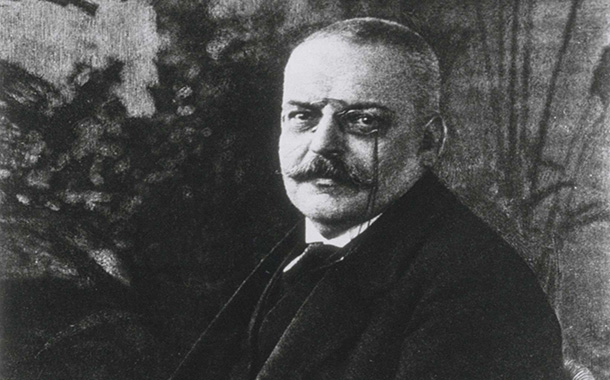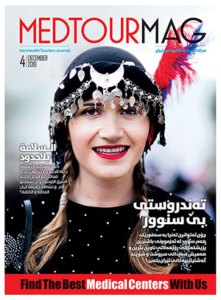Maryam Ferdowsi
The saga of one of the oldest and most reputable hospitals in Germany
Germany is often placed as one of the most developed and advanced countries in a plethora of different fields and specialties. With an enormous economy Germany has managed to make many industries work efficiently, medical tourism is no exception.
Germany is the ninth most popular tourism destination in the world, therefore significant efforts are put behind the industry by both the private as well as the public sectors. When the popularity of tourism in Germany is combined with its cutting edge medical technology, the recipe for medical tourism success is at hand.
Much like other things German, medical tourism also adheres to the exemplary, stereotypical German approach, it emphasizes quality above all, and does not compromise it even slightly for the sake of lower prices, in contrast to many developing countries.
Today we will take a look at the history and achievements of the Charite hospital in Germany, one of the main contributors to the German science of medicine.
History
The hospital in Berlin that we now know as the Charite is of the oldest in Germany, in fact is precedes the nation Germany historically. Early in the 18th century and on the onset of plague arrival to Berlin, a new quarantining facility was founded and was named by the German Emperor “Charite”, French for Charity.

Alois Alzheimer, discovered the eponymous disease while working in the Charite Hospital
Charite maintained its activity after the plague faded and over the course of the 18th and 19th century became one of the most accomplished hospitals in all of Europe. Several Important diseases and treatments were discovered in this time period which practically revolutionized medical science in Europe.
Destruction, Reconstruction and Decline
During World War II the Charite was completely destroyed due to allied bombings and following the wall it fell under Soviet rule. Charite was reconstructed and served as an exemplary hospital in Eastern Germany and an important part of the Soviet science propaganda.
Charite Rises Once More
Following the fall of USSR in 1990 and the unification of Germany Charite once more began ascending the medical pyramid; most notable changes were the reestablishment of the educational and research centers which had been destroyed in World War II.
With tireless work of the scientists of Charite, and utilization of th yielded research results, Charite once again became a forerunner of medical science in Europe.
Importance of Charite in German Healthcare
Today, the Charite has central role in treatment of Berliners and is one of the main contributors to the advancements of medical science in Germany. Charite has 4 main hospitals in Berlin itself. One of these centers, known as the Berlin Heart Center, is one of the best cardiovascular treatment centers in the world.
Other than these four main centers, Charite also operates over 100 outpatient clinics all over Germany. These clinics are placed into 17 categories by the Charite itself and treat German citizens everyday with great proficiency.

Berlin Heart Center operated by Charite featuring a reconstructed building of the original design
Charite maintains over 15 thousand personnel and staff members, out of this number, 4500 are physicians and medical scientists. Another 4500 are certified nurses while there 912 administrative staff members and 290 are University personnel.
Charite is publicly owned and under the supervision of the German Federal Government. This results in both the academy and the medical centers of the Charite to receive government funding.
Since 2012, Charite has been ranked as the best German hospital by the Focus, every year.
Newsweek has also ranked the Charite as the best hospital in Europe, and the fifth best in the world in 2019 and 2020.
Charite, Cradle of Noble Laureates
Since the 19th century and the founding of the Noble Prize up until the 1950s, The Charite Universities and Hospital served as the working place of over half of the German Noble Prize winners.
The most Notable of these Individuals include Emil Von Behring, Robert Koch, Paul Elrich, and Elois Alzheimer. In total, there are 11 Noble Laureates that have worked under the Charite’s name.
Universitätsmedizin: The Constant Factor of Success in Charite
It can be argued that the chief cause of success for Charite during both stints of prosperity in the Hospital’s success can be trade back to its credible and competent academy. The Universitätsmedizin ranks 43st worldwide in Times Higher Education World University Rankings and also ranks 41st in QS rankings.

The modern Charite University of Medicine (Universitätsmedizin) in Berlin, Towering over the city
In 2003 two other prominent universities of Germany, the Humboldt and the Free University of Berlin were jointly integrated with the Charite Universitätsmedizin, this made the university one of the largest in all of Europe.
In 2019, the German Government announced that the German National Institute of Health would fall under the supervision of the Charite Hospital, which makes the Charite the first hospital to receive government funding.
The University of the Charite Hospital receives over 8000 new students every year, 1700 of which come from outside of Germany and 800 graduates coming out every year.







